Yes, plenty of time has passed since Doom first started spreading around the world on floppy disks. It would seem that literally everyone who can open such material should know about this truly legendary game. However, in almost a quarter of a century, a whole generation of console and PC gamers has grown up who have never heard of anything like this. I’ll be honest: “In vain!” The fact is that this ancient relic, which has managed to become covered with dust, lives in almost every shooter. There are Doom echoes in most modern projects that really took off or failed terribly.
Doom introduces a ton of elements of modern shooters for the first time
Doom is called a legend for a reason. The game, released back in 1993, contained a lot of curious elements that guaranteed its popularity. Many thanks to the developers at Id Software – programmers John Romero and John Carmack. They laid in this project a ton of fundamental nuances that predetermined the next few decades of development not only in the direction of shooters, but also in the mass of other genres of computer entertainment. That is why it is logical to remember Doom even today – it is a classic that does not lose its relevance.
Why was Doom so interesting at the time? A striking example is immersive 3D graphics, which clearly stood out from the background of two-dimensional 16-bit adventure games. Three-dimensional space has become the basis for the online multiplayer shooters that are overflowing with the modern market. Realistic weapon physics and intricate labyrinthine levels are just a few of the elements that have become the basis for a range of versatile shooters. Some called them Doom clones, while others put them into a separate category called WAD by the movement buttons.
Yes, Doom was a breath of fresh air at the time in many ways. Instead of burying the player in an endless narrative with a ton of textual explanations, the developers made it possible for the levels to tell the story. Sharp corners and narrow corridors, open arenas and secret rooms filled with treasures, deadly dangers that lurked at every step – all this was in the game with its head. Compared to Wolfenstein 3D (1992), which was released by the same studio a year earlier, Doom was more unpredictable, and many really liked it.
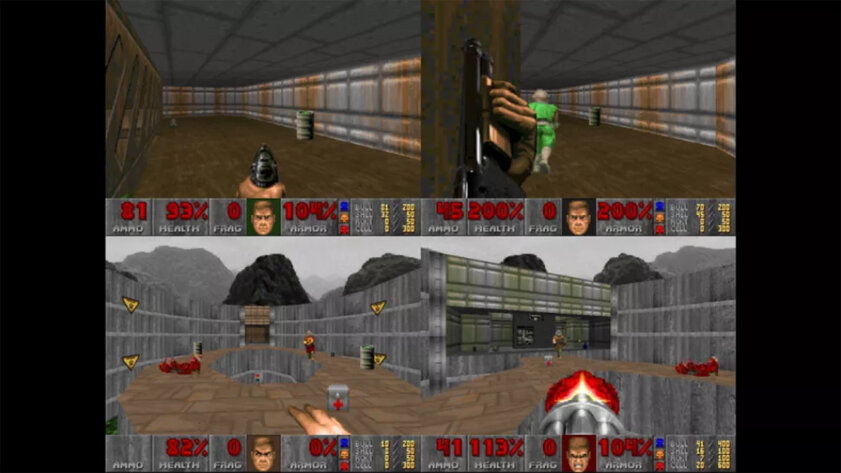
Doom gave the world a whole line of similar projects
Anyone who creates something truly worthwhile inevitably encounters numerous imitators. However, in the case of Doom, there is nothing really sad about it. The fact is that almost all the studios that took this shooter as a basis added a lot of new interesting features to it, moving the whole direction of electronic entertainment. For example, Marathon, originally from 1994, had a much smoother and generally convenient multiplayer mode. Bungie took this concept into service and went through a lot of significant steps to the same Halo: Combat Evolved from 2001.
It will take a long time for Deathmatch to become a generally accepted direction in the world of computer entertainment, but many will take their steps in this genre. Another prime example is System Shock from 1994, which was the obvious precursor to BioShock. Like many others, Looking Glass Studios also drew inspiration from the brainchild of Id Software. Such games borrowed from Doom not only the mechanics of a corridor shooter, but also a genuine sense of fear, which easily turned a banal shooter into a real adventure with a certain narrative and a lot of plot puzzles.
Who would have thought that the DNA of the project would become defining for so many electronic entertainment. Doom also influenced the Star Wars universe. Star Wars: Dark Forces from 1995 was a significant step forward for the whole direction of shooters and put a lot of interesting mechanics into them. For example, before this game, in similar shooters, only two coordinate axes – “X” and “Y” could be used to move. There was no “Z” axis, so the character could move and look around, but could not raise or lower his head. As a result, I could.
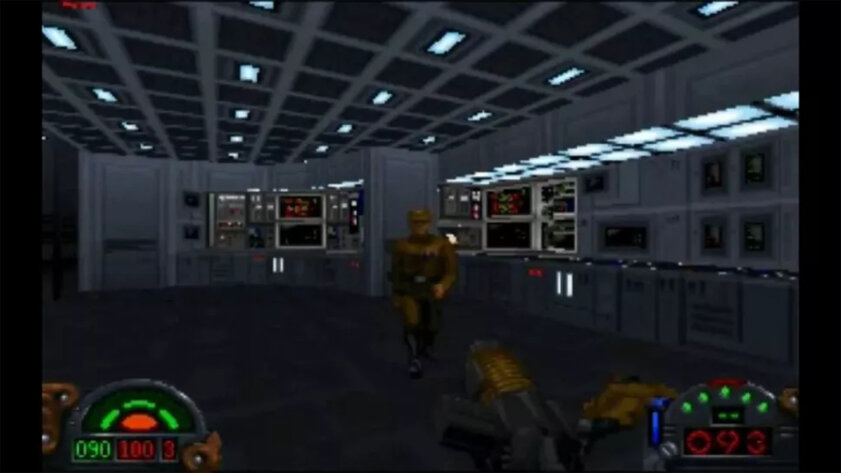
After the release of Doom in 1993, the studios began to rapidly pump three-dimensional graphics. They found more and more new ways to make it more aesthetically pleasing – the software part also developed. Another striking example is Duke Nukem 3D from 1996. This game has become not so much a trendsetter as a successful reworking of the Id Software classics. The levels in this adventure were also filled with secret rooms, clues were scattered around them, and weapons were then considered overflowing with violence. However, the game was also rewarded with a curious humor, which was not in Doom.
1996 was also remembered for the project The Elder Scrolls II: Daggerfall, developed by Bethesda Softworks. At first glance, this game fell into this paragraph of this material by mistake. However, she also skillfully exploited the ideas behind Doom. The main difference between the fantasy RPG was the open non-linear world, which seemed like a real revelation against the backdrop of numerous corridor shooters. Compared to 1994’s The Elder Scrolls Arena, it’s immediately clear that Bethesda Softworks was inspired by Doom.
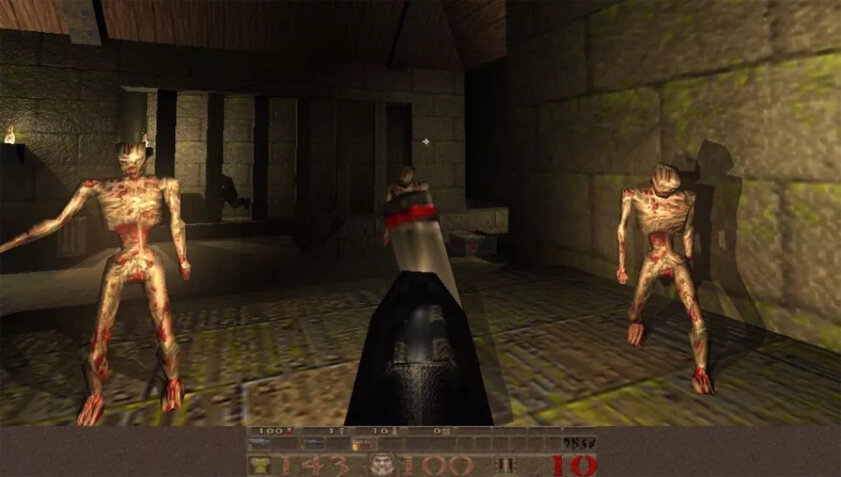
Doom pioneered the popular modding segment
The next important step in the development of the industry was a game from Id Software itself. It’s about Quake, originally from 1996. The project was a huge step forward for the genre in every way. On the one hand, it had tons of good Doom elements. On the other hand, he got redesigned 3D graphics and more elaborate environments. In Quake, day scenes were replaced by night scenes, which added variety to the gameplay. The opponents turned out to be more thoughtful, and this greatly paved the way for the incredible Quake 3 Arena, which shone on the world shooter scene for a very long time in the future.
By the end of the 90s, the popularity of Doom not only did not decline, but continued to grow, despite its relatively venerable age. How did this become possible? This is not surprising, because Id Software has systematically developed the modding community. Future programmers day and night built their own levels, finalized the game engine and found ingenious ways to use it in multiplayer. John Cormack went so far as to open the Doom source code to the world in 1997. This set an incredible precedent for fan content, which influenced the rise of Counter-Strike from Half-Life.

At the turn of the millennium, a trend towards multiplayer entertainment was increasingly visible in the gaming industry. Online shooters have become a vehicle for bringing fans of the genre together into one community, and something similar continues to happen even today. Deathmatch took it to the next level in 1999 with Quake 3 Arena and Unreal Tournament. Inspired by the basic ideas of Id Software, these games have become not only multiplayer, but also as fast and infinitely playable as possible. The impulse movement of the gamer has become more important than the firepower of his weapon.
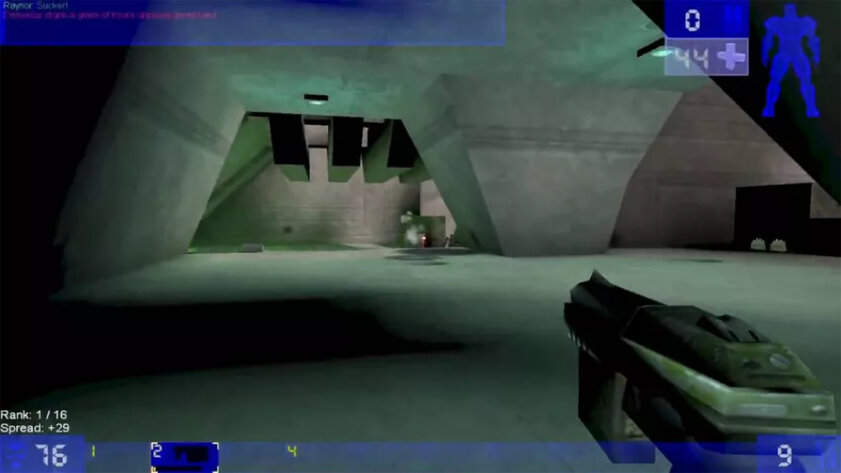
Yes, for Unreal Tournament and Quake 3 Arena, speed is everything. Jumping platforms, teleporters, collecting health capsules and shields – all this made them exciting and distinctive. Doom had all of these elements, and most importantly, the need for tactical survival with a limited amount of resources.
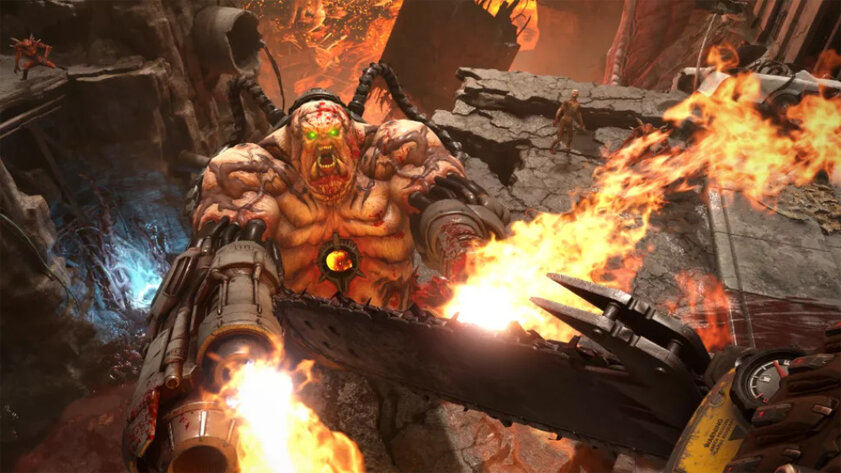
It’s very, very difficult to overestimate the importance of Doom to the industry.
Of course, modern shooters look completely different and use a lot of new mechanics that, on the one hand, burden the genre, but make it more capacious, on the other hand. Leveling characters, crafting items, independently changing the environment – all this in Doom was not even close. Developers continue to push boundaries and create more and more new hooks for gamers. In an era of technological limitations, Id Software didn’t have the ability to do something like this, but that didn’t stop the studio from writing Doom into history.
After so many years, the beauty of Doom is seen precisely in its simplicity. Of course, many consider this game to be nothing more than an arcade, but experienced gamers know that it needs to be felt more subtly. In the legendary creation of Id Software, a lot of secrets, as well as strategies that will help you in the passage.
The 2016 reimagining of Doom retained some of that purity and emphasized unbridled creative violence. 2019’s Doom Eternal continues this mantra. However, they no longer cause the same trepidation as the prototype from the early 90s. Despite the technical limitations, the first Doom definitely had something of that kind.
A source: TechRadar.
Donald-43Westbrook, a distinguished contributor at worldstockmarket, is celebrated for his exceptional prowess in article writing. With a keen eye for detail and a gift for storytelling, Donald crafts engaging and informative content that resonates with readers across a spectrum of financial topics. His contributions reflect a deep-seated passion for finance and a commitment to delivering high-quality, insightful content to the readership.






